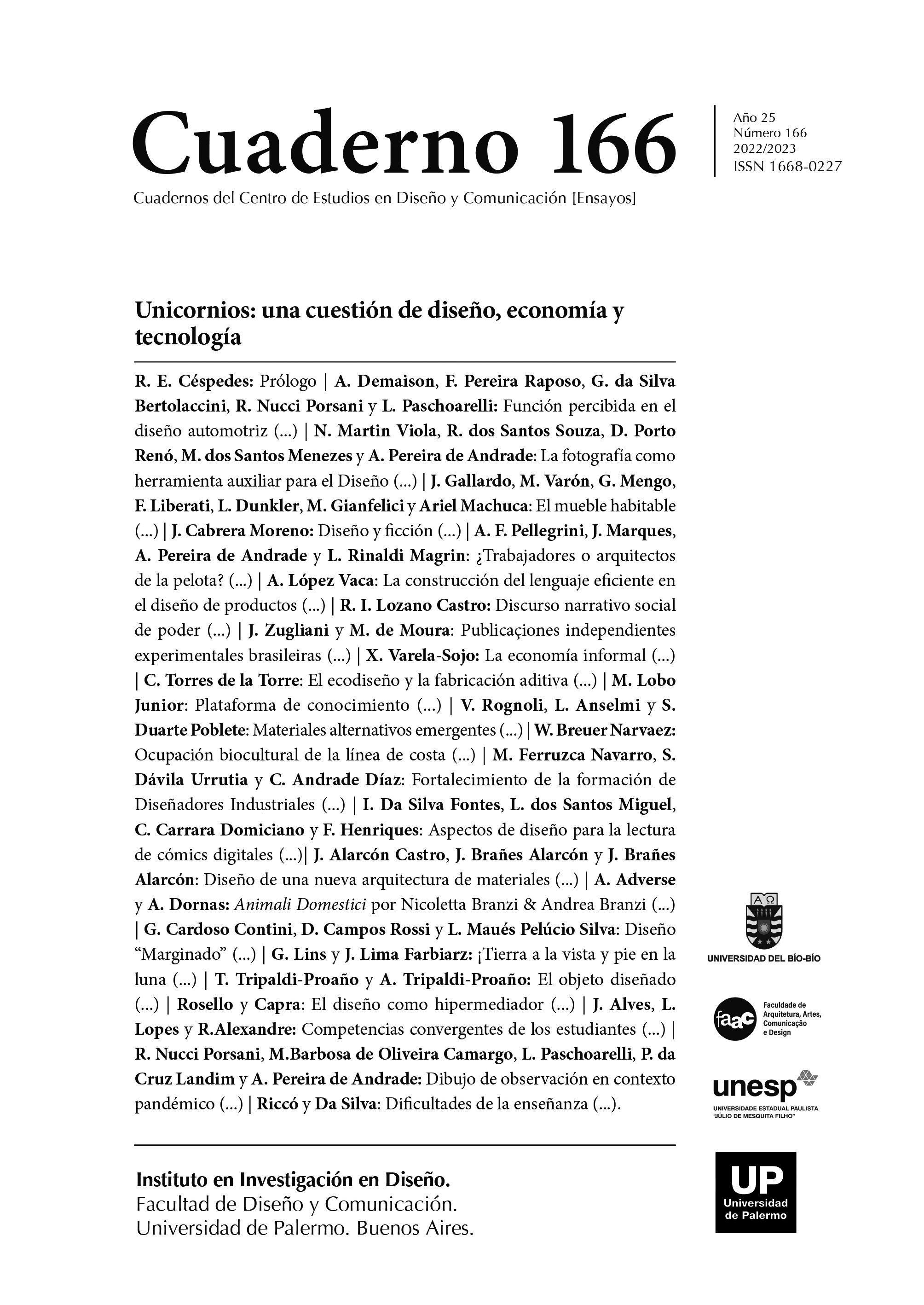El ecodiseño y la fabricación aditiva contribuyen juntos a una mayor circularidad de la economía
Resumen
En esta investigación se analiza la contribución del ecodiseño tanto en reducción de huella de carbono como en desmaterialización de la economía en el marco de las fases de prevención y reducción de la economía circular. En la parte de la investigación que da lugar a este artículo se busca indagar si las compañías que adoptan un modelo de negocio circular basado en ecodiseño reducen su huella ecológica. Se demuestra la existencia de relaciones entre las decisiones tomadas en la etapa de diseño de un producto y el nivel de consumo de energía y suministros durante las etapas de fabricación, distribución y uso de los productos, así como la reducción de desechos al final de su vida útil. Se encuentra además una relación entre el diseño y el tiempo en que los materiales permanecen en uso. Adicionalmente, se describe el papel que tiene la fabricación aditiva en potenciar la circularización de la economía. Se encuentra una relación entre el diseño generativo y la optimización topológica como estrategias para optimizar el diseño y una menor huella ecológica. Se concluye que, a pesar de las objeciones contra los plásticos, la impresión 3D presenta un balance ambiental positivo si se lo compara con la industria tradicional basada en economías de escala. En el mismo sentido, el diseño para fabricación aditiva contribuye a una mayor circularidad de la economía.
Citas
Andersen, M. S. (2007) ‘An introductory note on the environmental economics of the circular economy’, Sustainability Science, vol. 2, no. 1, pp. 133–140.
Bevilacqua, F. (2020). La operación de diseño y fabricación digital a la luz de la teoría de la individuación, [Tesis de Doctorado en Diseño Universidad de Palermo]. Cuaderno 113 | Centro de Estudios en Diseño y Comunicación (2020/2021). pp 181-375 ISSN 1668-0227
Casas, A. (2018). Análisis de diferentes procesos industriales sobre el ecodiseño de un producto. Universidad de Zaragoza.
Celani, G. (2008). Enseñando diseño generativo: una experiencia didáctica. https://architektur-informatik.scix.net/pdfs/sigradi2008_202.content.04763.pdf
Ellen MacArthur Foundation (2012) Towards the circular economy: Economic business rationale for an accelerated transition.
Geissbauer, R., Wunderlin, J. y Lehr, J. (2017). The future of spare parts is 3D. A look at the challenges and opportunities of 3D printing. PwC. www.strategyand.pwc.com
Ghisellini, P., Cialani, C. and Ulgiati, S. (2016) ‘A review on circular economy: The expected transition to a balanced interplay of environmental and economic systems’, Journal of Cleaner Production, vol. 114, pp. 11–32.
Greyson, J. (2007) ‘An economic instrument for zero waste, economic growth and sustainability’, Journal of Cleaner Production, vol. 15, 13-14, pp. 1382–1390.
Heshmati, A. (2015) A Review of the Circular Economy and its Implementation, IZA Discussion Paper No. 9611.
International Council On Clean Transportation. (2017). Lightweighting Technology Developments. Technical Brief No. 6 | March 2017. www.theicct.org/series/us-passengervehicle-technology-trends.
Kirchherr, J. & Piscicelli, L. (2019). Towards an Education for the Circular Economy (ECE): Five Teaching Principles and a Case Study. Resources Conservation and Recycling, vol. 150. Marchante, A. La importancia de la sostenibilidad en la fabricación aditiva. 3Dnatives.https://www.3dnatives.com/es/importancia-sostenibilidad-fabricacion-aditiva-261120212
Meza, C., Tamayo, F. y Franco, E. (2014). Optimización topológica aplicada al diseño de componentes estructurales mecánicos de peso reducido. El Hombre y la Máquina No. 44 Enero - Junio de 2014.
MPCEIP y GIZ. (2021) Libro Blanco de Economía Circular de Ecuador. Quito, Ecuador.
Murray, A., Skene, K. and Haynes, K. (2017) ‘The Circular Economy: An Interdisciplinary Exploration of the Concept and Application in a Global Context’, Journal of Business Ethics, vol. 140, no. 3, pp. 369–380.
Navarro, P. (2016). Diseño de una bicicleta polivalente mediante diseño generativo. Universitat Politècnica de València. http://hdl.handle.net/10251/75454
Oh, S., Jung, Y., Kim, S., Lee, I., and Kang, N. (September 16, 2019). “Deep Generative Design: Integration of Topology Optimization and Generative Models.” ASME. J. Mech. Des. November 2019; 141(11): 111405. https://doi.org/10.1115/1.4044229
Potting, J., Hekkert, M., Worrell, E., Hanemaaijer, A., (2017). Circular Economy: Measuring Innovation in the Product Chain.
Redacción Interempresas. (2022, marzo). La economía circular en la fabricación aditiva: valoración de plásticos. Impresión 3D. https://www.interempresas.net/Fabricacionaditiva/Articulos/382201-La-economia-circular-en-la-fabricacion-aditiva-valoracionde-plasticos.html
Roncoroni, U. (2015). Manual de diseño generativo. Lima: Universidad de Lima. Fondo Editorial.
Sing, I. y Kok-Soo, T. (2010). Eco-Efficient Product Design Using Theory of Inventive Problem Solving (TRIZ) Principles. American Journal of Applied Sciences 7 (6).
Su, B., Heshmati, A., Geng, Y. and Yu, X. (2013) ‘A review of the circular economy in China: Moving from rhetoric to implementation’, Journal of Cleaner Production, vol. 42, pp. 215–227.
Torres de la Torre, C. (2020). Economía Circular. Economía Circular. Recuperado 14 de marzo de 2022, de https://economiacircular.info
Van der Ryn, S. y Cowan, S. (2007). Ecological design / 10th anniversary ed. Island Press.
Wautelet, T. (2018). The Concept of Circular Economy: its Origins and its Evolution.
Wu, J., Qian, X. y Wang, M. Y. (2019). Advances in Generative Design. CAD Special Issue generative design.
Los autores/as que publiquen en esta revista ceden los derechos de autor y de publicación a "Cuadernos del Centro de Estudios de Diseño y Comunicación", Aceptando el registro de su trabajo bajo una licencia de atribución de Creative Commons, que permite a terceros utilizar lo publicado siempre que de el crédito pertinente a los autores y a esta revista.


